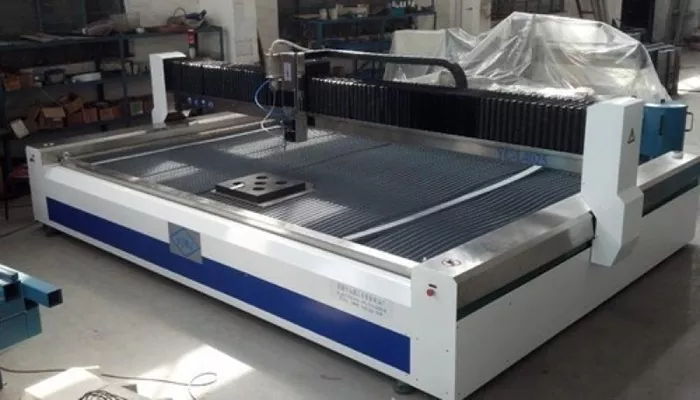The Waterjet Cutting Machine Consumables Market is growing quickly. This growth is driven by the rising need for precise cutting in industries such as automotive, aerospace, and electronics. Consumables like nozzles, orifices, and abrasive materials are essential parts of waterjet cutting machines. They directly affect how well the machines work, their performance, and the quality of the cuts. As more manufacturers and metal fabricators use waterjet cutting machines, the demand for these consumables increases.
Among the different types of consumables, abrasive materials have the largest market share. They are important because they allow the machines to cut hard materials like metals, stones, and ceramics. In terms of regions, North America leads the global market. This is due to its strong manufacturing industry, advanced technology, and high investment in precision machinery. The United States, in particular, has many original equipment manufacturers (OEMs) and suppliers that depend on reliable, high-quality consumables for optimal machine performance.
Market Segmentation
The market is divided based on product type, machine type, and end-user industry. Product types include abrasive nozzles, orifices, focusing tubes, mixing chambers, and abrasive materials such as garnet. Abrasive materials hold a dominant share because they play a key role in cutting thick and hard materials effectively.
By machine type, the market includes pure waterjet machines and abrasive waterjet machines. The abrasive waterjet machines lead the market since they can cut a wider range of materials, including metals and composites.
In terms of end-user industries, the main segments are automotive, aerospace, electronics, metal fabrication, and construction. The automotive industry uses waterjet cutting extensively. It helps create complex parts with little heat damage, making it a vital industry for this technology.
Regional Insights
North America is the largest market. This is supported by widespread industrial automation, demand for precise machining, and a strong manufacturing base. Major OEMs and the adoption of advanced technology ensure steady growth.
In Europe, countries like Germany, Italy, and France are key players. Their automotive and aerospace sectors need precise parts that waterjet cutting can produce.
The Asia Pacific region, including China, India, and Japan, is the fastest-growing market. Rapid industrial growth, increasing manufacturing investments, and infrastructure development boost the demand for waterjet consumables.
Latin America and the Middle East & Africa are also growing markets, but at a slower rate. Greater awareness and gradual modernization of industries in these areas drive adoption.
Market Drivers
The main driver of this market is the need for precise cutting without heat damage. Waterjet cutting uses cold water, which preserves the material’s integrity. This is different from other cutting methods that generate heat and can change the material’s properties.
Growth in the automotive, aerospace, and electronics industries is increasing the use of consumables. These industries require reliable and accurate machining. Also, the rise of automation and Industry 4.0 technologies encourages the use of smart, high-precision cutting tools. This increases the demand for durable and efficient consumables.
Market Restraints
Despite growth, the market faces some challenges. High costs of quality consumables, especially abrasives like garnet, may stop small manufacturers from using waterjet cutting. Frequent replacement of parts like nozzles and orifices raises operating costs. This can limit the market’s reach.
Additionally, a lack of skilled operators and technical knowledge in emerging economies can slow market growth.
Market Opportunities
There is growing global interest in sustainable and eco-friendly technologies. Waterjet cutting is seen as a clean and green alternative to laser or plasma cutting. This creates new opportunities for consumables that focus on recycling, reducing waste, and lowering environmental impact.
Technological improvements in composite consumable materials promise longer life and better performance. This offers good chances for manufacturers to innovate.
Furthermore, the increasing need for customized machines and components in precision engineering can expand the market for tailored consumables.

